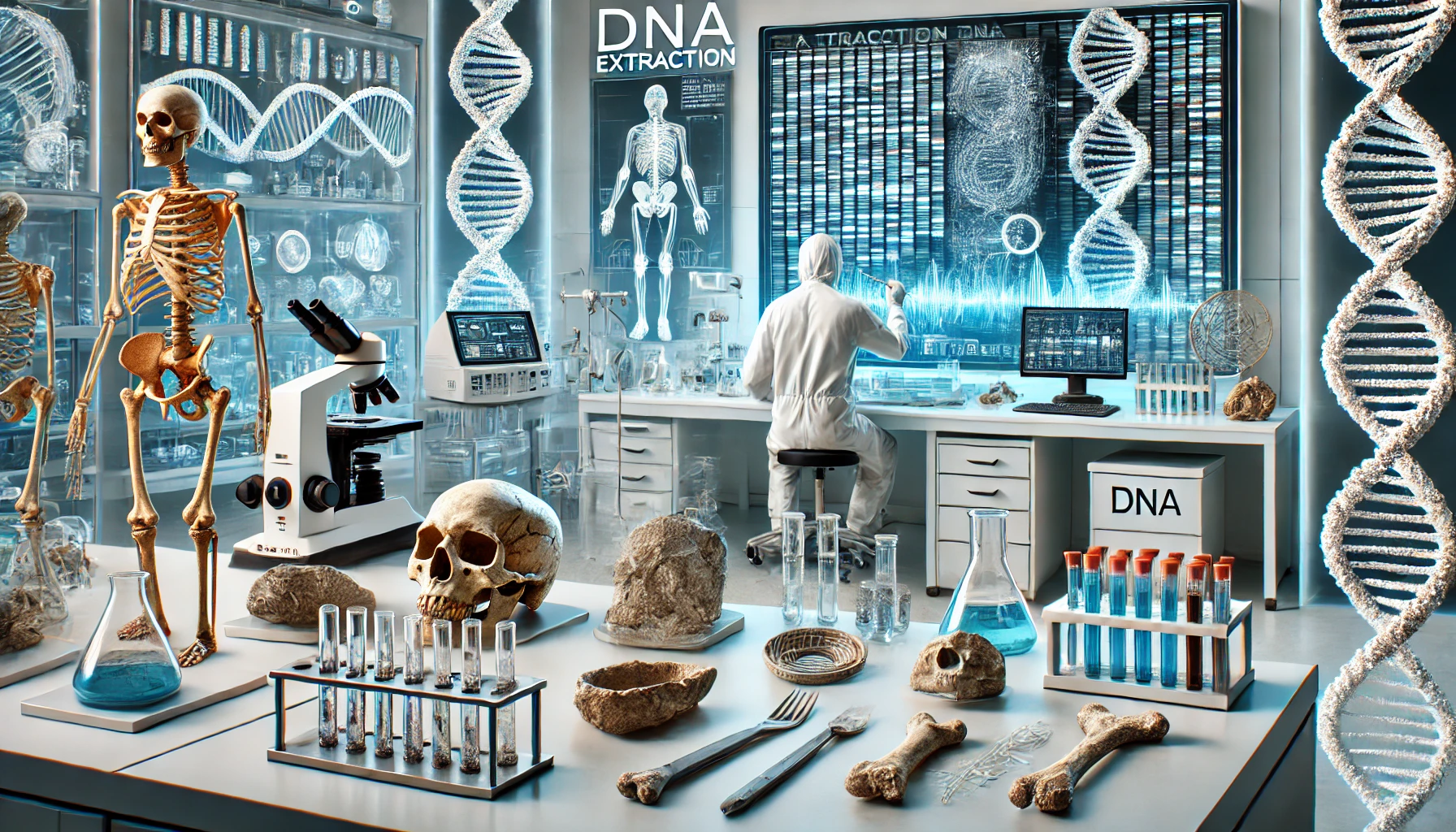How is ancient DNA extracted?
Article Source: Nature

Why you should care
Ancient DNA offers incredible insights into the past, helping us trace human evolution, study extinct species, and understand how environmental changes shaped life on Earth. By learning how ancient DNA is extracted, we uncover the rigorous science behind reconstructing history from biological traces that are often thousands of years old.
Answering the question… How is ancient DNA extracted?
Ancient DNA extraction involves recovering degraded genetic material from sources like bones, teeth, or sediments. It’s a meticulous process due to contamination risks and the DNA’s fragile state. On average, only 1-5% of extracted material is authentic ancient DNA, requiring sophisticated lab techniques like demineralization and filtration to ensure accuracy.
How was the study done?
The study detailed protocols for ancient DNA extraction, including sample preparation, cleaning, and DNA isolation. Researchers examined specimens from various archaeological sites, applying enzyme-based digestion and silica-based purification methods to retrieve even minute DNA fragments. All work occurred in sterile conditions to minimize contamination.
What was discovered?
- Ancient DNA is highly fragmented, often averaging 50-200 base pairs in length.
- Effective extraction depends on the condition of the specimen, with bone and teeth being the most reliable sources.
- Contamination with modern DNA is a major challenge, accounting for up to 95% of extracted DNA in poorly managed settings.
- The silica-column method, used to isolate and purify DNA, significantly increases retrieval efficiency.
- Environmental factors, like temperature and soil pH, play a crucial role in DNA preservation over millennia.
Why does it matter?
The ability to extract ancient DNA revolutionizes our understanding of history, from tracking human migrations to studying extinct ecosystems. These methods enable researchers to analyze genetic blueprints from tens of thousands of years ago, bridging gaps in science and history and advancing fields like anthropology, paleontology, and evolutionary biology.
